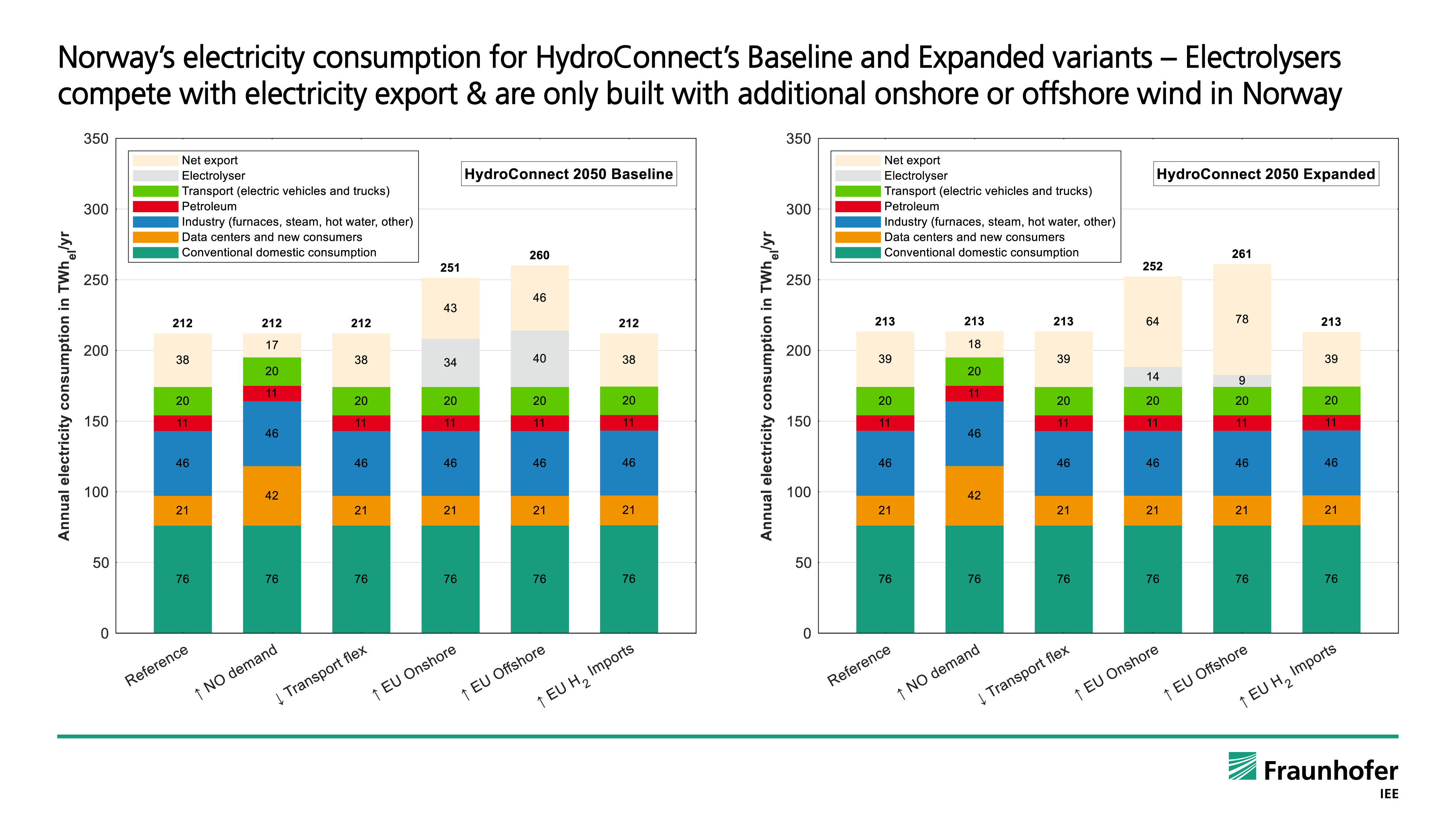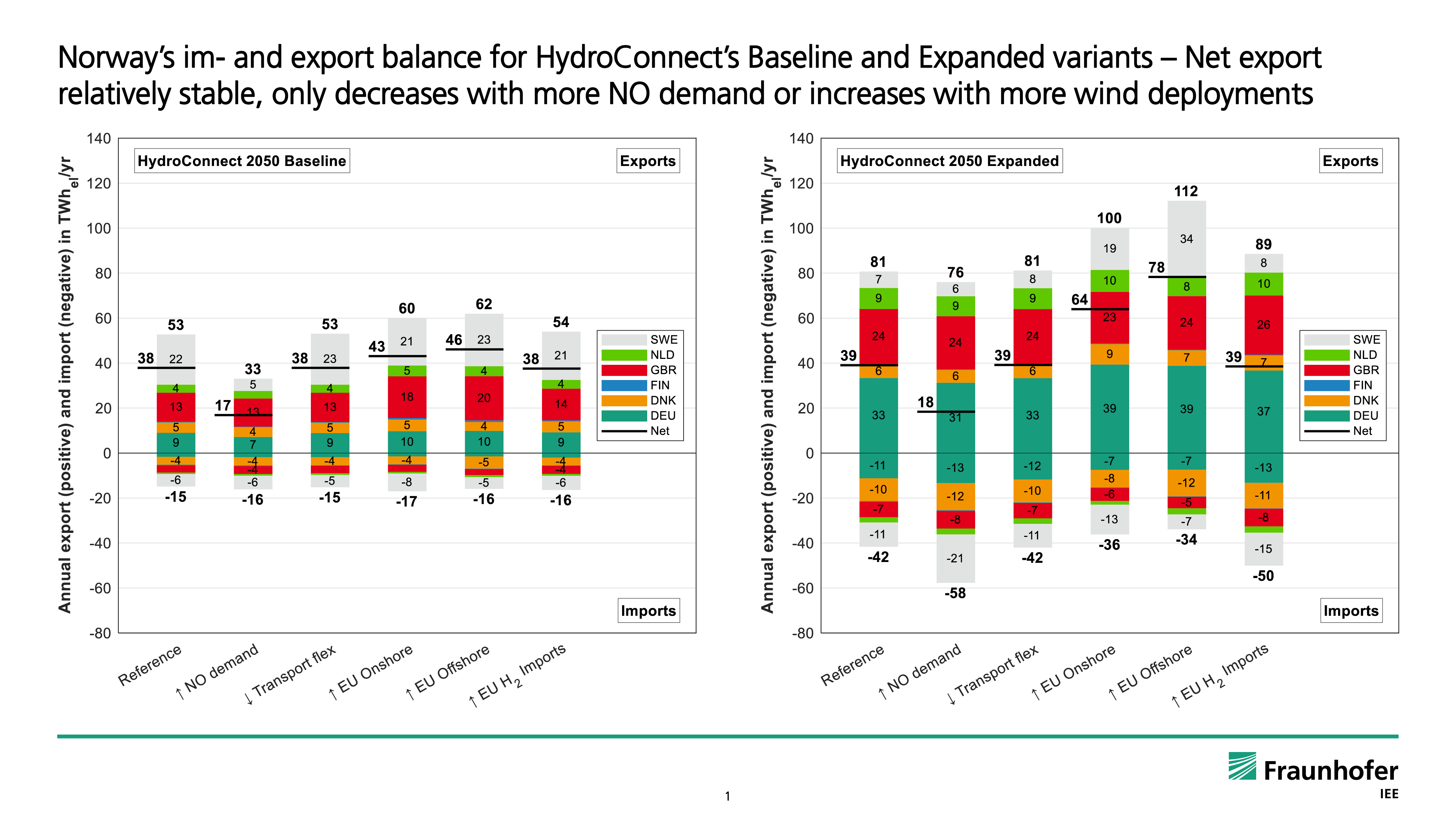Role of Fraunhofer IEE
Fraunhofer IEE is fully funded for its role as an international research partner in the HydroConnect project. With our experience and tools for medium- to long-term scenario developments for energy system transformations, we mainly contribute to the research work on “Impacts on the European Power System” within the project. More specifically, we use our SCOPE Scenario Development modelling and optimisation framework to compute relevant scenarios for Norwegian hydropower in the future. To analyse its role in future European energy scenario settings, we employ a detailed hydropower model for the multi-reservoir hydro valleys and investigate several scenario variants reflecting essential uncertainties in the future. These include increased Norwegian electricity demand, public onshore wind power acceptance, increased offshore wind deployments, including offshore energy islands, and varying green hydrogen import prices.
Collaboration
Our work is a joint effort and is conducted in close cooperation with our research partners at SINTEF Energi AS and NTNU. Together, we improve our knowledge of how hydropower can be used to balance variable renewable energy sources. Based on the results from the HydroBalance project and power system scenarios from openENTRANCE, HydroConnect will evaluate the effects of the Norwegian hydropower system providing balancing services to the European power system at short (2030) and long (2050) time horizons with different scenarios of power system development. For this purpose, Fraunhofer IEE’s database on hydropower plants across Europe has also been aligned and updated for the Norwegian power system.


